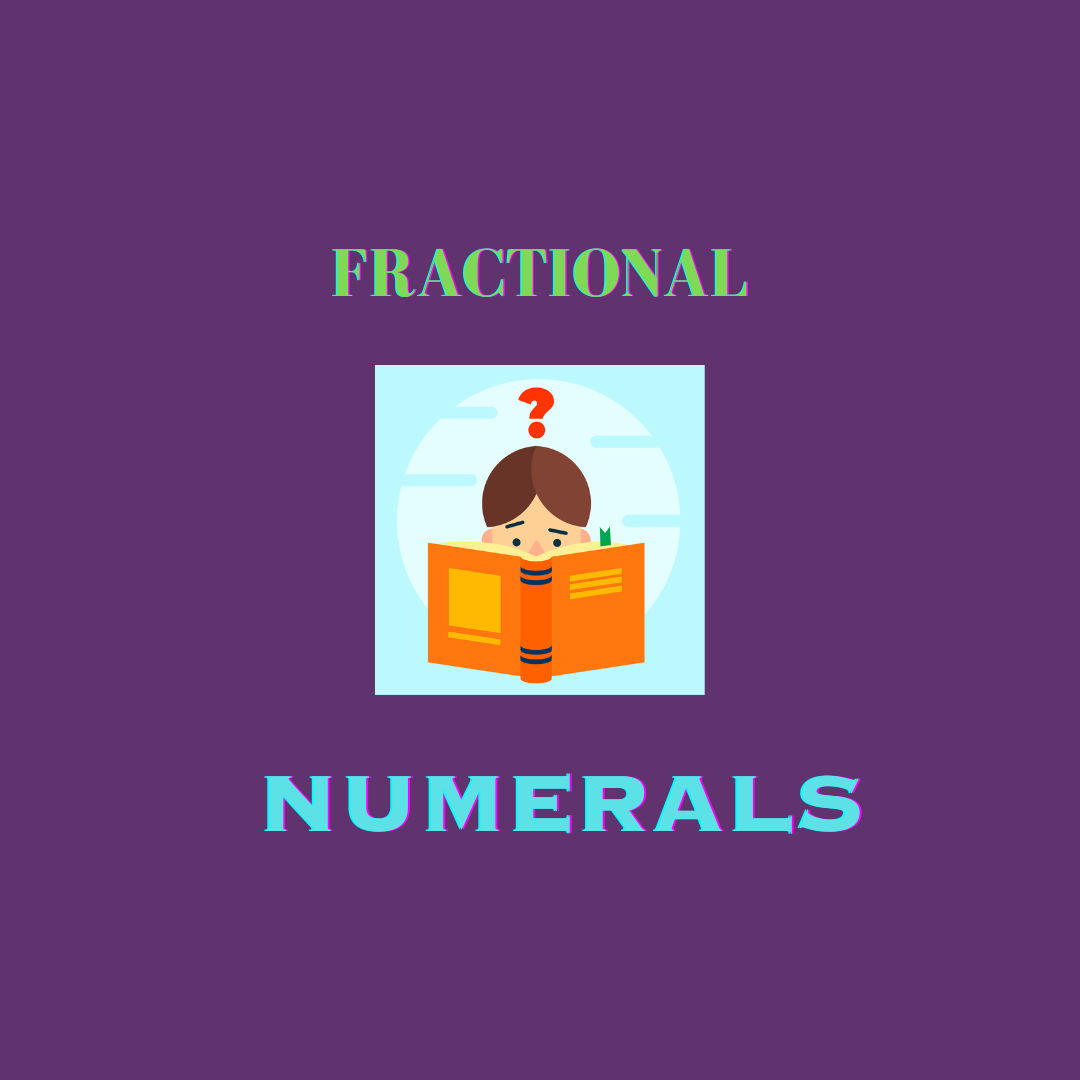English Fractional Numerals

Fractional numerals:
A table of fractional numerals with their common and decimal equivalents:
| Fraction | Common Fraction | Decimal Fraction |
| 1/2 | ½ | 0.5 |
| 1/3 | ⅓ | 0.3333… |
| 2/3 | ⅔ | 0.6666… |
| 1/4 | ¼ | 0.25 |
| 3/4 | ¾ | 0.75 |
| 1/5 | ⅕ | 0.2 |
| 2/5 | ⅖ | 0.4 |
| 3/5 | ⅗ | 0.6 |
| 4/5 | ⅘ | 0.8 |
| 1/6 | ⅙ | 0.1666… |
| 5/6 | ⅚ | 0.8333… |
| 1/8 | ⅛ | 0.125 |
| 3/8 | ⅜ |
How to read the fractional numerals in written form:
| Fraction | Written Form |
| ½ | one-half |
| 1/3 | one-third |
| 2/3 | two-thirds |
| ¼ | one-fourth |
| ¾ | three-fourths |
| 1/5 | one-fifth |
| 2/5 | two-fifths |
| 3/5 | three-fifths |
| 4/5 | four-fifths |
| 1/6 | one-sixth |
| 5/6 | five-sixths |
| 1/8 | one-eighth |
| 3/8 | three-eighths |
For fractions with denominators greater than 10, the convention is to simply state the numerator followed by the denominator.
For example, 11/12 would be read as eleven twelfths.
Some grammar rules for decimal fractions:
A decimal fraction is a number written in base 10 using the decimal point to separate the whole number part from the fractional part.
For example, 3.75 is a decimal fraction where 3 is the whole number part and .75 is the fractional part.
How to read a decimal fraction:
To read a decimal fraction, say the whole number part followed by the word point, and then the digits of the fractional part.
For example, 3.75 is read as three point seven, and five.
If there are leading zeros in the fractional part, they can be omitted when reading the decimal fraction.
For example, 0.75 can be read simply as point seven five.
If the decimal fraction has a repeating pattern of digits, a bar is placed over the repeating digits.
For example, 0.333… (which has a repeating pattern of 3’s) is written as 0.3 with a bar over the 3, and is read as zero point three repeating or zero point three recurring.
Decimal fractions can be converted to common fractions by placing the digits of the fractional part over a power of 10 that has the same number of digits as the fractional part.
For example, 0.75 can be written as 75/100, which can be simplified to 3/4.
For example, 3.75 is a decimal fraction where 3 is the whole number part and .75 is the fractional part.
Some grammar rules for percentages:
A percentage is a number expressed as a fraction of 100, and is denoted by the symbol %.
For example, 50% means 50 out of 100.
To read a percentage, say the number, followed by the word percent.
For example, 50% is read as fifty percent.
To convert a percentage to a decimal, divide the percentage by 100.
For example, to convert 50% to a decimal, divide 50 by 100: 50/100 = 0.5.
To convert a decimal to a percentage, multiply the decimal by 100 and add the % symbol.
For example, to convert 0.5 to a percentage, multiply by 100: 0.5 x 100 = 50%, so the answer is fifty percent.
To find the percentage increase or decrease between two values, divide the difference between the two values by the original value, multiply by 100, and add the appropriate sign (plus for an increase, minus for a decrease).
For example, if the original value was 100 and the new value is 120, the percentage increase would be ((120-100)/100) x 100 = 20%, so the answer would be a twenty percent increase.
How to represent a percentage as a common fraction or decimal:
50% can be represented as the common fraction 1/2 or the decimal 0.5.
25% can be represented as the common fraction 1/4 or the decimal 0.25.
75% can be represented as the common fraction 3/4 or the decimal 0.75.
33.33% can be represented as the common fraction 1/3 or the decimal 0.3333 (rounded to four decimal places).
12.5% can be represented as the common fraction 1/8 or the decimal 0.125.